The Tsumeb Mine: a short history
We shall never know when African natives first began to win copper from the legendary “Green Hill”, the surface expression of what would become known as the Tsumeb deposit. History does record, however, that European explorers in the 1880s encountered Africans transporting and trading copper ores and crudely smelted metal. They eventually traced these goods back to Otjisume – which translates as the place of the frog – named, it seems, for the appearance of the copper-stained outcrop; “Tsumeb,” it is said, is a corruption of the Herero name, Otjisume (Söhnge 1967).
Late in 1892, a British mining engineer by the name of Mathew Rogers was sent by the South West Africa Company to investigate mineral deposits in the Otavi Mountainland. He arrived at Tsumeb – the Green Hill – in January 1893, and was clearly most impressed; he wrote back to his employers “I have never seen such a sight as was presented before my view at Soomep, (sic.) and I very much doubt if I shall ever see such another in any other locality”. Figure 1 shows a map of the Tsumeb outcrop and its immediate surround, drafted during the Rogers expedition.
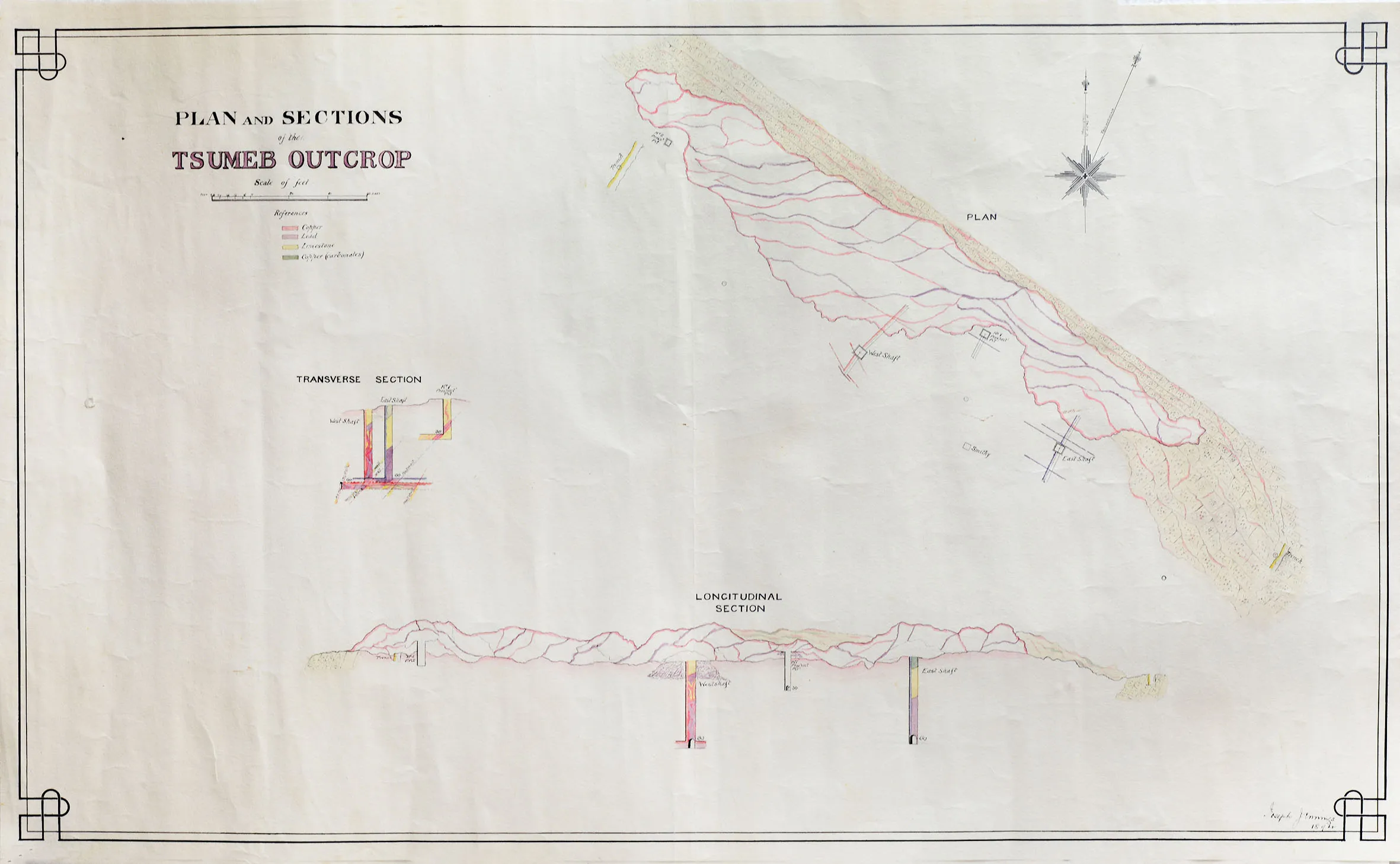
Figure 1: An early map and section of the Tsumeb outcrop, dated 1894, drawn by Joseph Jennings, cartographer on the Mathew Rogers expedition of 1892. Courtesy of the Geological Society of South Africa; photographed by Bruce Cairncross.
But South West Africa, as Namibia was then known, had become a German protectorate in 1884, and it was a German Company – the Otavi Minen und Eisenbahn Gesellschaft (OMEG; Figure 2) – that developed the mine commencing with two trial shafts in 1900. Full scale commercial production had to wait until 1906, however, while a dedicated railway line from the coast was installed.

Figure 2: A stock certificate for one share in the Otavi Minen und Eisenbahn Gesellschaft (OMEG), dated September 1921. Malcolm Southwood Collection and photo.
Ore production was initially from an open pit with a few shallow shafts, but as surface ore was exhausted operations moved underground, necessitating the development of extensive surface infrastructure (Figure 3). For almost a century, albeit with interruptions related to the two World Wars and the Great Depression, Tsumeb would become an important producer of not only copper, but lead, zinc, and a number of minor metals including arsenic, cadmium, germanium, and silver (Söhnge 1967). It would also become recognised as one of the world’s premier mineralogical localities, yielding a host of rare mineral species and setting quality benchmarks for species such as azurite, cerussite, dioptase, mimetite, and smithsonite, to name but a few.
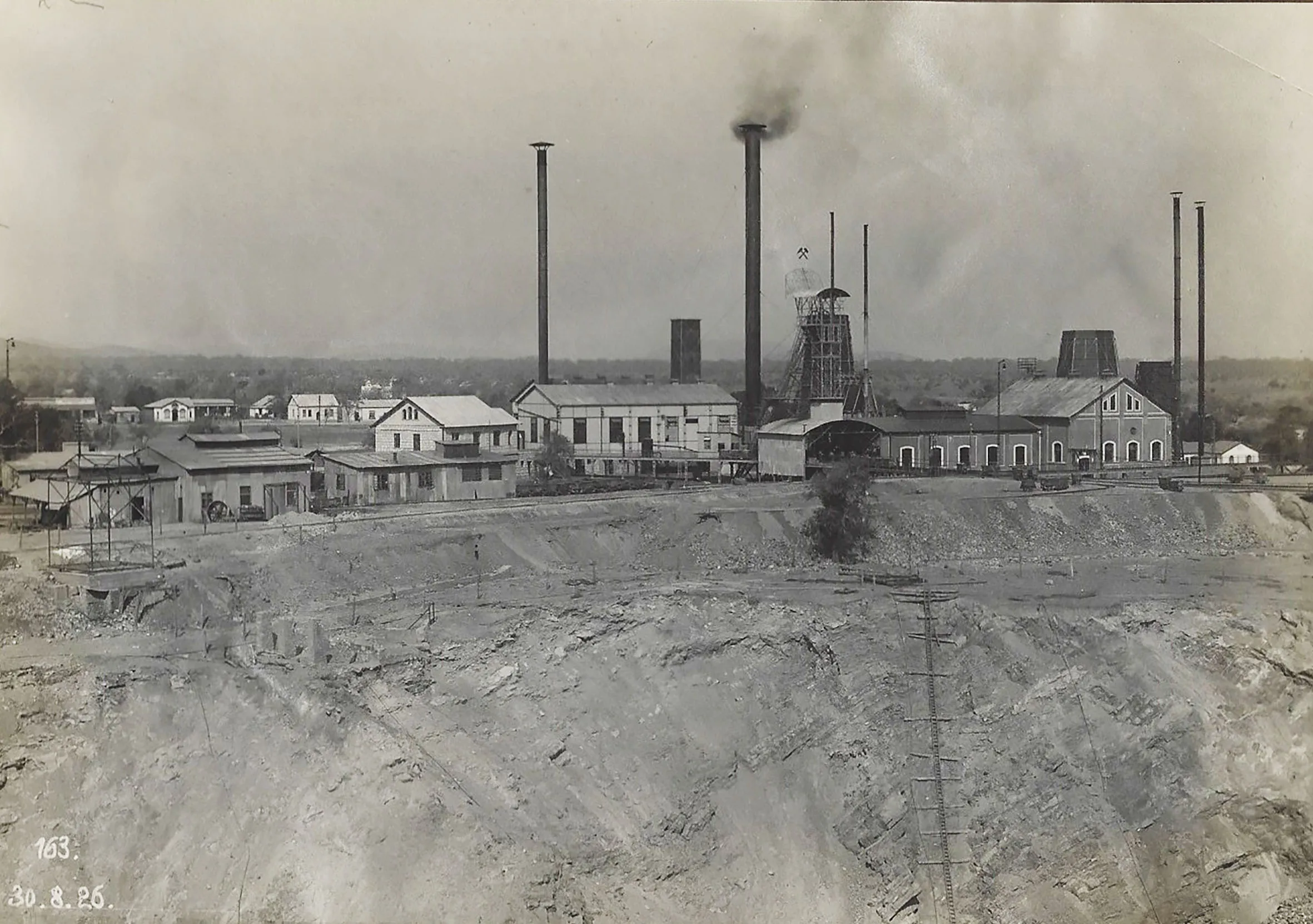
Figure 3: A view of the Tsumeb mine looking WSW across the Open Pit. The photograph, believed to have been taken by Wilhelm Klein, is dated 30 August 1926. The wall of the Open Pit is visible in the foreground, and the recently completed headframe of the No. 1 (Friedrich Wilhelm) shaft is visible at right of centre. Image courtesy of the Wilhelm Klein Tsumeb Archive.
Tsumeb’s potential for mineral specimens was recognised very early. A large sample of ore was shipped to Germany for metallurgical testing in 1900, and the engineer charged with handling the samples – one Wilhelm Maucher, at the Bergakademie, in Freiberg – recognised, and preserved, examples of several secondary mineral species, all in well-crystallised forms, from this test material. Maucher also wrote the first detailed mineralogical description of the Tsumeb ore (Maucher 1908a). Minerals such as azurite, cerussite, malachite and smithsonite, proved to be abundant both at outcrop and in the early open pit and underground workings, and specimens of extraordinary quality were readily available.
In 1906 the first new mineral was described from Tsumeb. Otavite, cadmium carbonate (Figure 4), was named for the Otavi mining field within which the Tsumeb deposit is located (Schneider 1906) and, six years later, tsumebite, a rare copper phosphate, was named for the mine itself (Busz 1912; Rosicky 1912). Ironically, these two earliest new minerals from Tsumeb remain among the rarest and most elusive species for modern collectors of Tsumeb minerals.
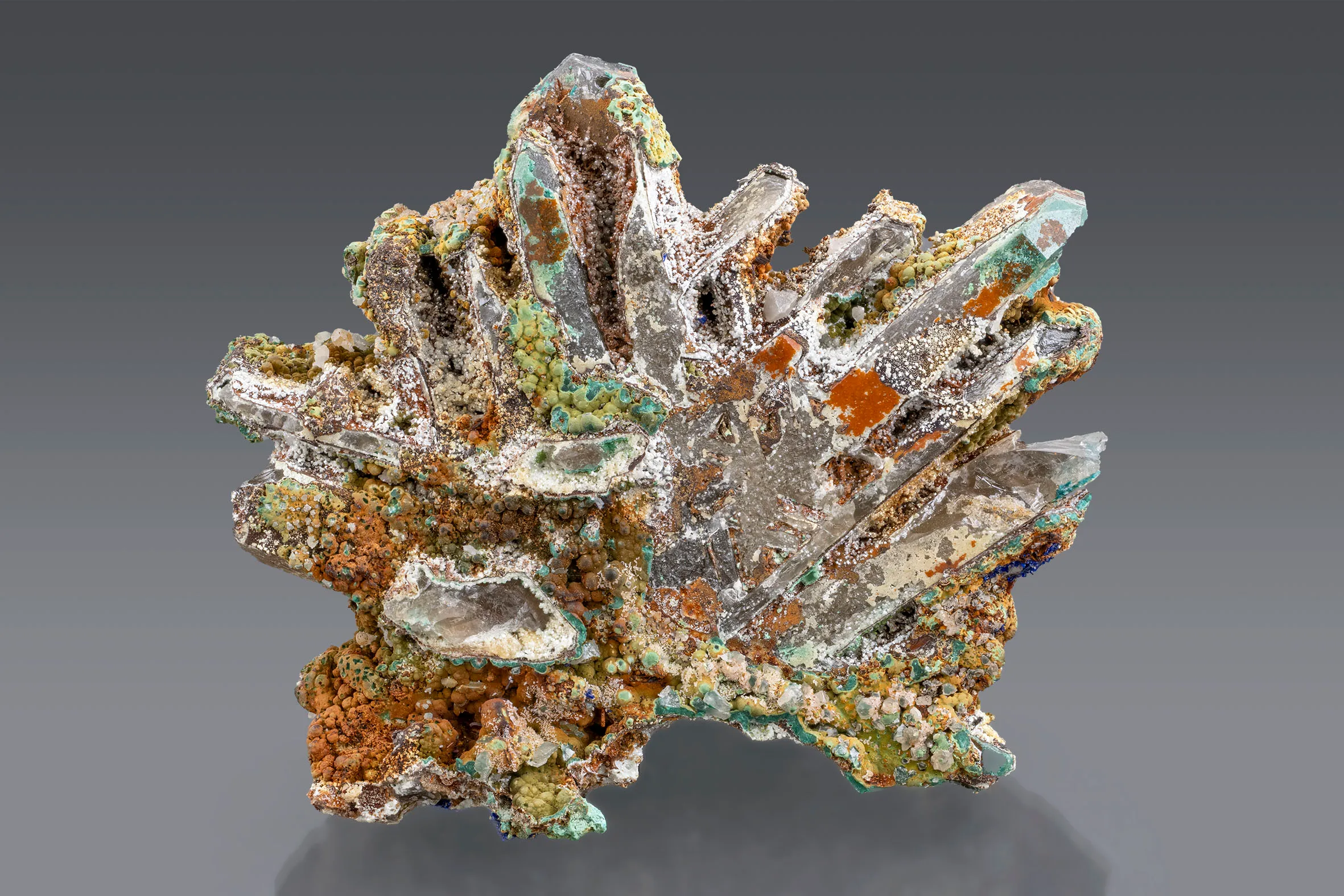
Figure 4: A 75 mm specimen of twinned cerussite, the arms of which are encrusted with white to off-white otavite – the first new mineral described from Tsumeb in 1906. MGMH Collection number 2022.4.10042D, formerly in the Mark Feinglos Collection. Malcolm Southwood photo.
As the mine deepened, fine specimens continued to be found and the list of mineral species grew. The 1920s seems to have been a particularly productive period, with the recovery of many fine pockets of azurite – unquestionably one of Tsumeb’s signature minerals – and the notable discovery of germanite, which would lead to Tsumeb’s emergence as a major producer of the element germanium.
The first, and perhaps the most famous, of Tsumeb’s “named pockets” of minerals was discovered in December 1929, when Samuel Gordon, visiting Tsumeb from the USA, chanced upon a pocket of large, pristine azurite crystals on 8 Level (Lininger 2001-2002). Gordon was obliged to share his find with the mine manager, F.W. Kegel, so that today the pocket is perhaps best remembered as the “Gordon/Kegel Pocket” (Figure 5).
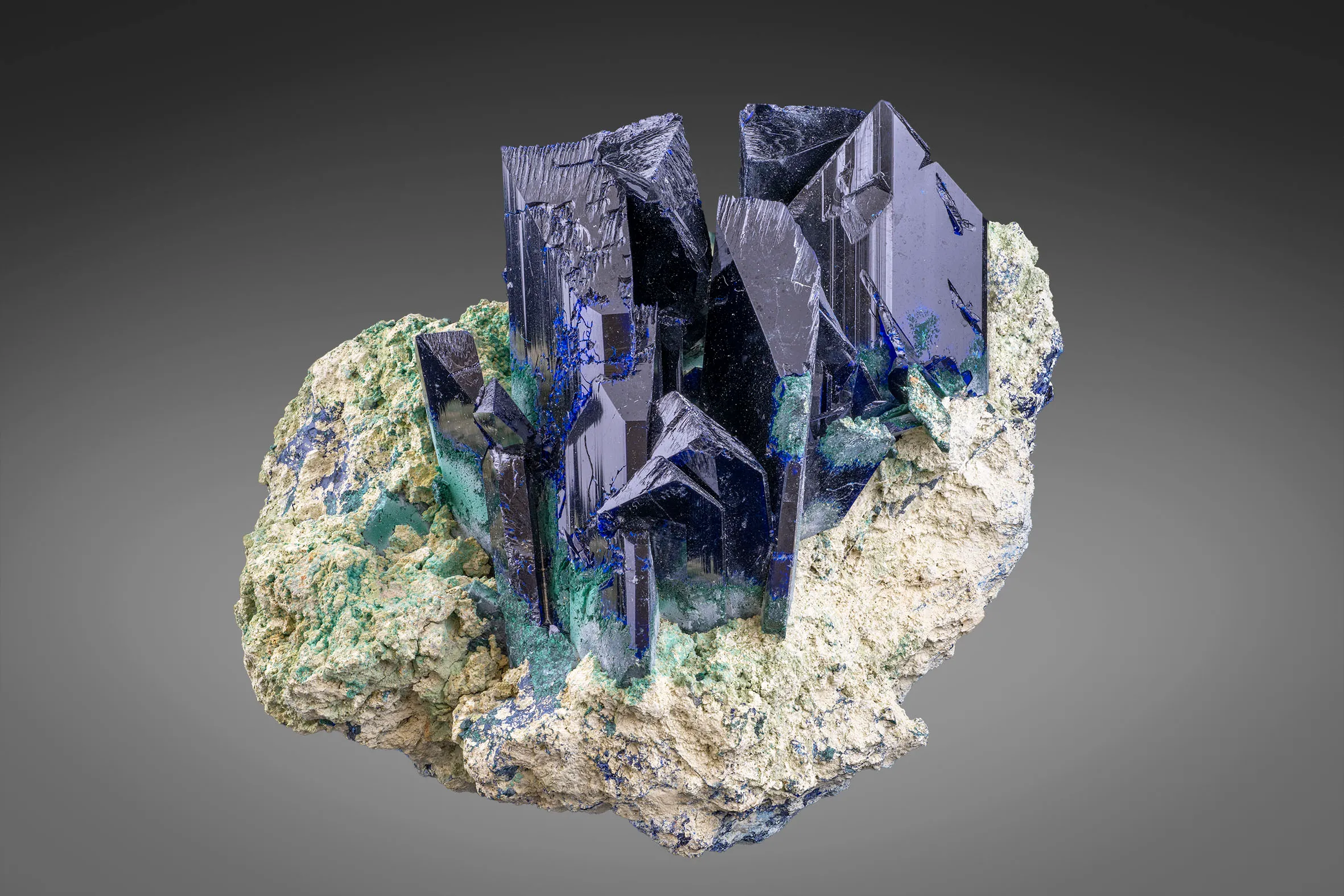
Figure 5: A 130 mm azurite specimen from the “Gordon/Kegel Pocket”, discovered on 8 Level in 1929. MGMH Collection number 116495 and formerly number 1010 in the collection of Wilhelm Klein, production manager at Tsumeb between 1916 and 1939. Malcolm Southwood photo.
During the inter-war years, several senior OMEG managers – notably F.W. Kegel, W. Klein, W. Thometzek, and a shift-boss by the name of Keller (nobody seems to know his first name) – assembled fine mineral collections which now grace major museums on either side of the Atlantic. The Klein Collection, perhaps, is worthy of special mention, because Wilhelm Klein, a senior manager at Tsumeb between 1916 and 1938, took the trouble to record the level of the workings on which each of his specimens was found. His collection, of which the major part was purchased by Harvard University in 1954, greatly enhances our understanding of the distribution of mineral species in the upper levels of the mine (Klein 1938; Southwood et al. 2019, 2022).
From the late 1920s, deeper mining encountered a higher proportion of primary, unoxidised sulphide ores, although the extraction of oxidised ore from the upper levels continued in order to blend an optimal feed for the metallurgical plant. When the mine closed at the outbreak of World War II, the deepest workings were some 670 metres below surface (22 Level), and the list of minerals recorded from the mine at that time numbered approximately fifty species (Klein 1938; Bürg 1942).
Post-war operations resumed in 1947 under the new ownership of the Tsumeb Corporation Limited. Once again, the workings were deepened and, to the amazement of mine geologists, began to penetrate a second zone of oxidation commencing approximately 810 metres below the surface (26 Level). The mining of this second oxidation zone led to the discovery of a large number of minerals new to science – leiteite, ludlockite, reinerite and stottite are just a few examples.
The second oxidation zone was also the source of the fine dioptase specimens that flowed from Tsumeb during the late 1960s, 1970s and 1980s. Renowned American mineral dealer Charlie Key estimated that the value of dioptase specimens recovered from Tsumeb exceeded the value of all of the other mineral species combined (Key 1996) and, arguably, the dioptase zone of the ore body (essentially from 29 Level to 32 Level) did as much to raise the significance of Tsumeb with modern mineral collectors as azurite discoveries had done for an earlier generation a half-century before. However, important discoveries of other mineral species were also made during this period, with the “Gem Pocket” mimetites (in 1971) and the “Ice Cream Pocket” calcites and “Blue Pocket” smithsonites (both mid 1970s) among the best-known finds. The famous “Perkins Sams” azurite pocket was discovered in 1980 and was one of relatively few major azurite discoveries in the deeper levels of the mine. The pocket is named for Texas oil man Perkins Sams, who purchased most of the specimens from this occurrence.
The second oxidation zone gave way, once again, to essentially unoxidised sulphide ores from below a depth of about 1190 metres from surface (36 Level). Incredibly, however, a third oxidation zone commencing from approximately 1380 metres depth (42 Level) was encountered in the 1980s, once again leading to discoveries of minerals new to science in unusual, and often spectacular combinations. Biehlite, erikapohlite, and ianbruceite are examples of minerals first discovered in Tsumeb’s third oxidation zone. The “Zinc Pocket”, discovered on 44 Level in the early 1990s, yielded fine combinations of minerals such as legrandite, leiteite, paradamite, reinerite and smithsonite (Gebhard 1999).
Yet one of the last major specimen discoveries at Tsumeb came from the upper levels of the mine over the Easter weekend in 1994, when pillar-robbing operations on 8 Level intersected a large pocket of azurite crystals with an unusual tabular habit – the famous “Easter Pocket” (Gebhard 1995).
Large-scale mining ceased at Tsumeb in the mid-1990s. By this time the deepest workings were some 1700 metres below surface (48 Level). High mining and pumping costs, combined with low metal prices were already impacting on profitability, and deteriorating labour relations proved to be the final straw. When striking miners denied management access to the mine site in mid-1996, the pumps had to be switched off, and the mine flooded rapidly. Small-scale working of the upper levels continued for a while and, finally, there was a short-lived attempt at mining for specimens between 1998 and 2002 (Cook et al. 2002). The two prominent headframes and some of the mine buildings remain as testimony to the town’s mining history (Figure 6 and Figure 7).
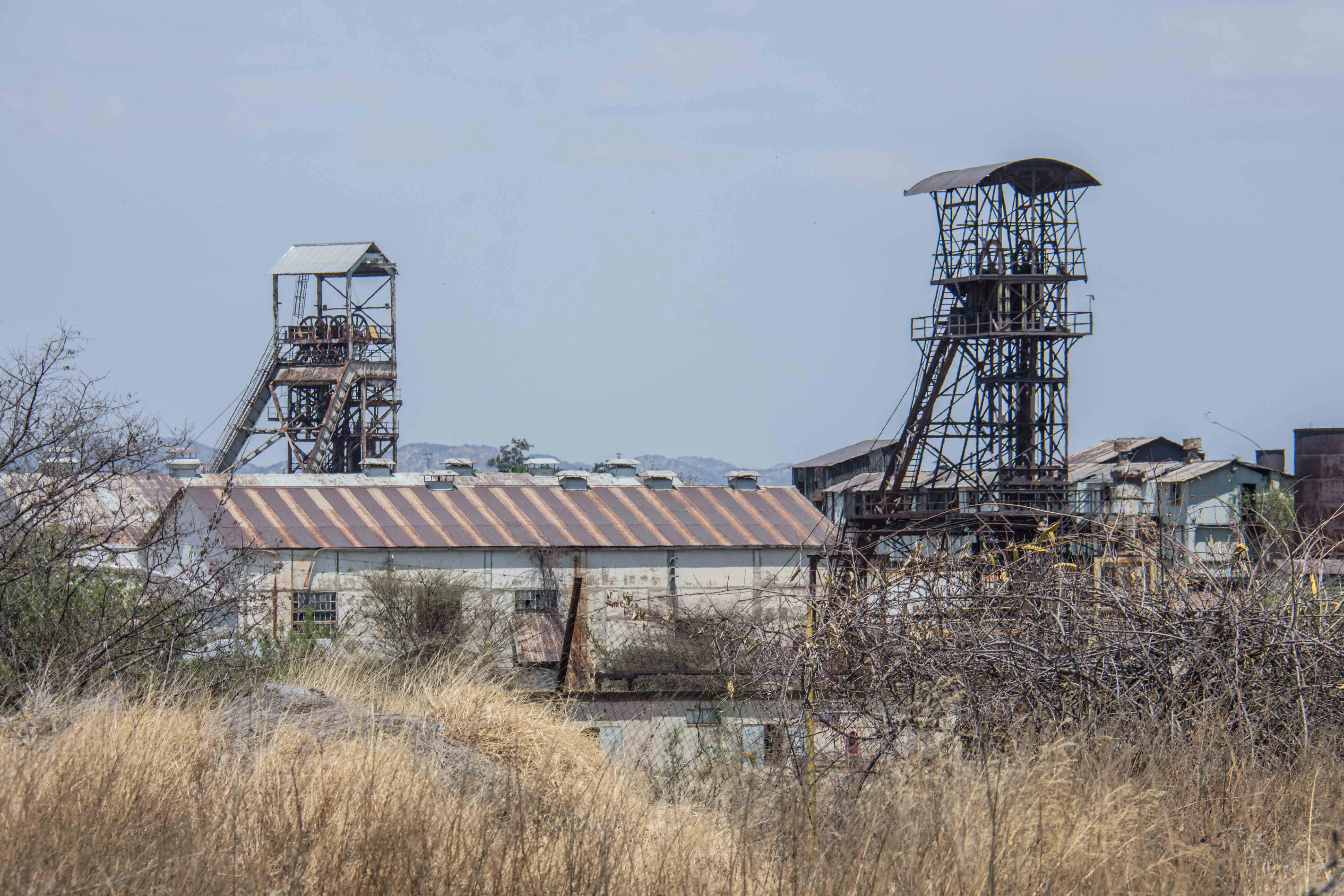
Figure 6: A view of the Tsumeb mine site in September 2018 looking WSW across the Open Pit, with many of the buildings in a semi-derelict condition. Malcolm Southwood photo.
So why was Tsumeb such a diverse and prolific source of mineral species?
Firstly, the primary ore exhibits extraordinary geochemical diversity; polymetallic sulphide mineralisation, containing copper, iron, lead and zinc, is by no means uncommon, but at Tsumeb, the primary sulphide ore is also (relatively) rich in metals such as arsenic, cadmium, gallium, germanium, molybdenum, and silver, with yet more elements occurring in trace amounts (Lombaard et al. 1986). Secondly, the Tsumeb deposit has a unique “plumbing system”. The ore body is in the form of a sub-vertical, pipe-like structure, hosted by a sequence of extensively karstified, dolomitised limestones. Solution cavities and permeable horizons in these carbonate host rocks have allowed oxidising groundwater to penetrate to great depths, facilitating the development of the deeper (second and third) oxidation zones mentioned above. These two features, in combination, have facilitated the development of well-formed crystals of a huge diversity of secondary mineral species, helping to make Tsumeb one of the world’s most important mineral localities.
Despite the cessation of commercial mining in the mid-1990s, the number of species recorded at Tsumeb, and the number of new minerals discovered there, continues to grow as specimens from old collections are placed under fresh scrutiny, with ever-improving analytical techniques.
Tsumeb is, unquestionably, a mineralogical marvel, and it would be hard to overstate its importance in terms of mineralogical diversity and the quality of specimens that it has produced; in the words of the renowned American mineral dealer Charlie Key (1935 – 2021), “Tsumeb is simply beyond unique!”
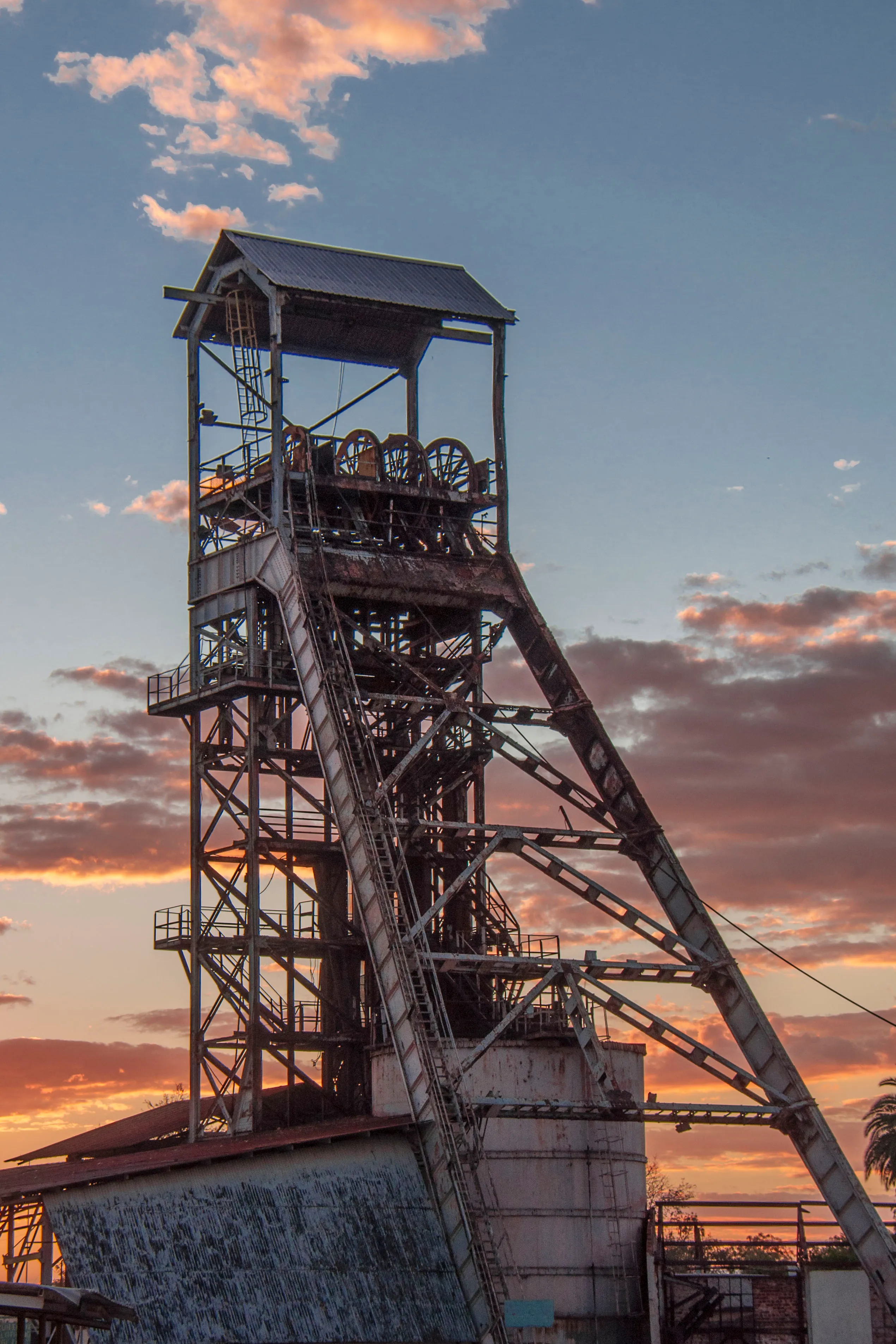
Figure 7: The famous De Wet Shaft headframe at Tsumeb, photographed at sunset in September 2014. Malcolm Southwood photo.